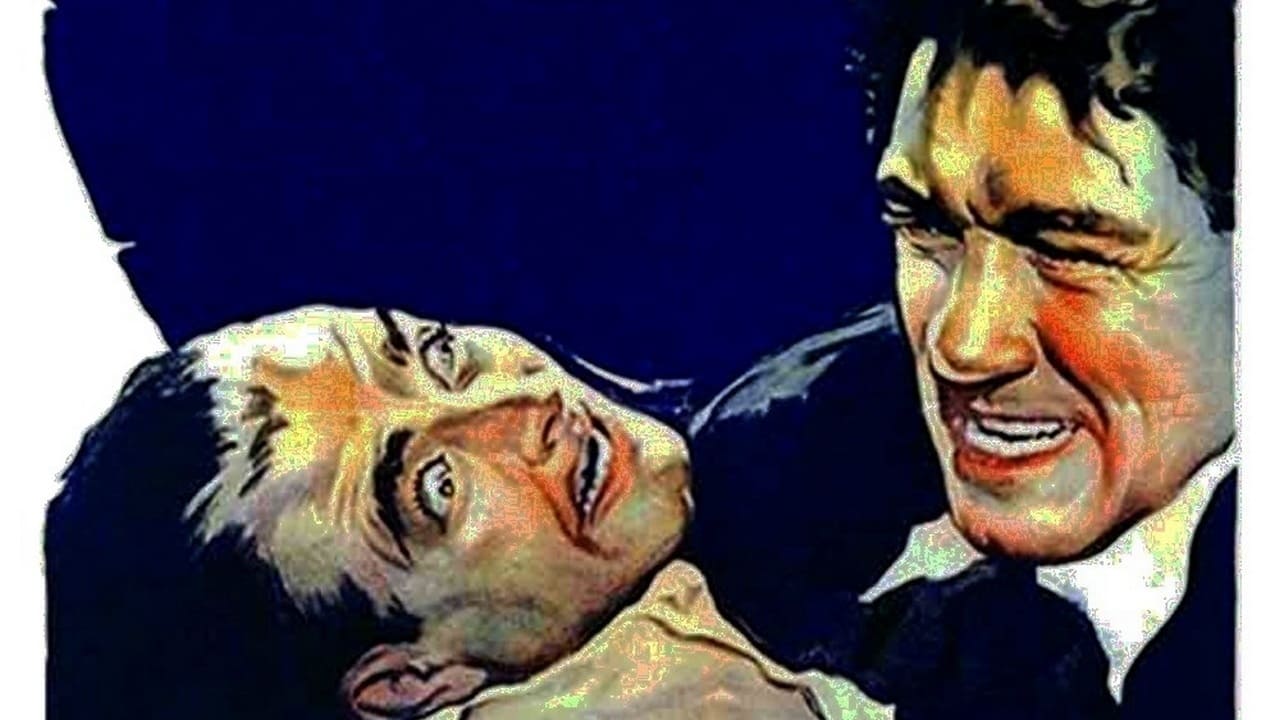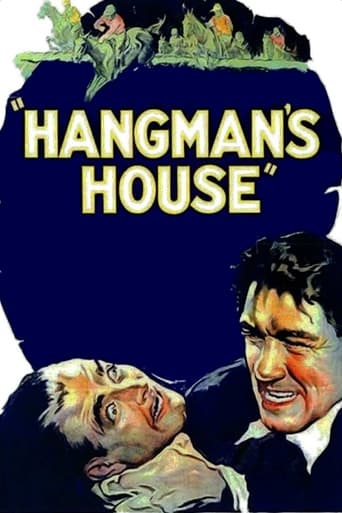

. . . in another of his Paeans to Paganism, titled HANGMAN'S HOUSE. Educated people know that Democracy was invented centuries ago in a small island chain called Great Britain, when the Magna Carta was signed. The British had to enlighten the inhabitants of their outer islands that such practices as Cannibalism and Soccer were Bad Heathen Habits, but some of their more backward atolls remain subject to backsliding even in Today's 21st Century, as evidenced by the recent Brexit vote. Mr. Ford comes down hard on the side of the Satanic Idolators, portraying the few Civilized Brits appearing on-screen here as Cartoonish Snidely Whiplashes. This is especially grating upon informed movie watchers' sensibilities, as they're aware that in Real Life Mr. Ford and his notorious "Road Company" featuring miscreants such as Victor McLaglen (seen here), Ward Bond, and the infamous (and justly hung here) Marion Mitchell Morrison not only engineered and pulled the strings for the murderous McCarthy Witch Hunt Punch & Judy Show, but they also sang like canaries, back-stabbing unsuspecting colleagues over petty jealousies, coveted Floozies, or professional opportunities as the Super Duper Snitch Squad. This makes Ford's "snitches get stitches" pretense during HANGMAN'S HOUSE particularly galling. The only comforting thought to be found here is that Mr. Ford no doubt is Roasting For Real right now, like his Snidely Whiplash character in HANGMAN.
... View MoreI rented this at Netflix to see John Wayne in his earliest credited role, and there he is and in more than one scene, too, at the races. They had to kind of bury him with a family and friends and put him in the back of a wagon, until it was time to tear down the fence, in order to tone down this extra's height, good looks, and enthusiasm! Otherwise, he would have taken over the whole scene. No wonder Ford was interested in him.In addition to Wayne, though, I was surprised to see how good this movie is overall, even today. It has some of the 1920s melodramatic touches and rather silly (from today's perspective) plot devices, but that is more than outweighed by John Ford's film shots of the Irish countryside and its people.I swear Ford took some of the "Irish" shots out of this and set them into "The Quiet Man," in color and with sound; for example, the buggies with the men and women in the side seats are just shown in passing in "Hangman's House," but of course Ford makes them a prominent plot device in "The Quiet Man." There is actually more loving detail of upper class Irish life in "House," including some spectacular sets of houses and the waterways, than in "Quiet Man." Listen to the music in the race scene in "House": it's a version of the same tune that Michaleen starts in the last sequences of "The Quiet Man," when Wayne goes down to the train station to fetch O'Hara home. I always wondered why Ford featured that so prominently.Ford also used some very imaginative camera setups, including having some of the horses in the race come straight at the camera and then jump over it, as well watching the old hanging judge suffering torments of conscience...with the camera filming him from the back of the fireplace, through the flames! Victor McLaglen dominates the film, too. It's quite a revelation for someone who has just seen him in "The Quiet Man,"and seeing his performance in "House" enhances the whole fight scene at the end of "The Quiet Man."All in all, this excellent movie complements "The Quiet Man" quite well.
... View MoreHangman's House is one of a number of sentimental slices of rural European life to come out of Fox Studios in the late-silent era. This time round the focus is on dear old Ireland, and so who better to produce and direct than renowned blarney-merchant John Ford? Ford's approach to this one is very uncluttered, in that there are none of the improvised comedy diversions that decorated (or bogged down) many of his features. This is perhaps not surprising, since the story and characters being as they are, Ford probably saw no need to inject any further twee "oirishness". Ford's directness is helpful, because the plot is a bit of a muddle as it is. It's not entirely clear whose story we are supposed to be following, as equal weight (albeit different emphasis) is given to three different arcs. Ford probably didn't regard this as a problem though – for him the main character is simply the Irish people, and he photographs each individual as if they were the protagonist.Ford's economy of expression is much in evidence. A typical Ford shot is the introductory one of Hobart Bosworth, he of the eponymous house. In the centre of the frame we see the man as he is now, elderly and frail. The portrait on the wall behind him shows us what he was, whereas the flames that underline the image hint symbolically at where he may soon end up. This is not to say Ford's shot compositions were overly complicated. For most of the picture he uses simple, delicate arrangements that focus us on the important elements. This is often achieved with soft-focus photography, which also adds to the sweet, romantic look of the images.One of the characteristics of the late-silent period is the freeing up of the camera, with pictures such as Sunrise having the lens whiz about all over the shop. By contrast Ford wisely limits himself in this respect, and there are only two significant camera moves in the whole of Hangman's House. The first is at the end of the opening scene, a version of the much-imitated pull-back-across-a-long-table shot that was originally done in 1925 Valentino vehicle The Eagle. This is mirrored towards the end with a dolly in on villainous Earle Fox. Besides these examples the camera is "invisible", in that it only moves to follow an actor or an action. Ford would maintain this pattern of camera movement throughout his career, throwing in just one or two noticeable moves per pictures to draw attention to a key moment.It's a pity the auteurists focused so much on Ford's "themes", because they draw attention away from his restrained and to-the-point command of cinematic technique. To be honest, there is far more going on on that front than there is in the story of Hangman's House, which is clichéd, unfocused and above all boring. Ford's tender shot compositions for the intimate scenes compensate for the so-so acting, and his imaginative coverage of the horse race provides us with a rousing mid-film high point. But pretty though the imagery may be, Ford's pictures of this period were not very interesting. He is one filmmaker whose style would be revitalised by the coming of sound.
... View MoreHaving worked as a 'grip' during his summer holidays between terms at the University of Southern California, John Wayne was given the opportunity to rub shoulders with John Ford in this film as an extra. When Wayne sustained an injury to his shoulder, Ford suggested to him to work full-time in films.
... View More